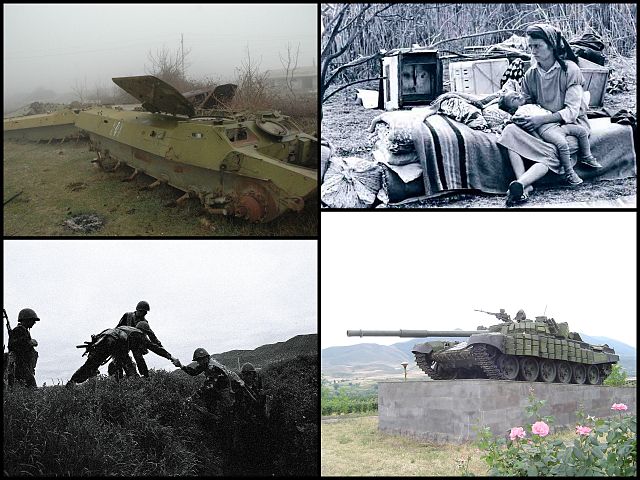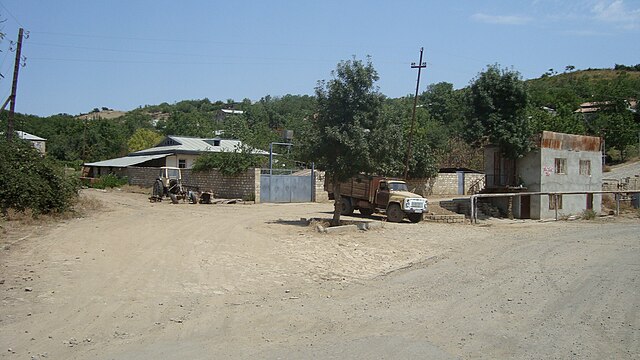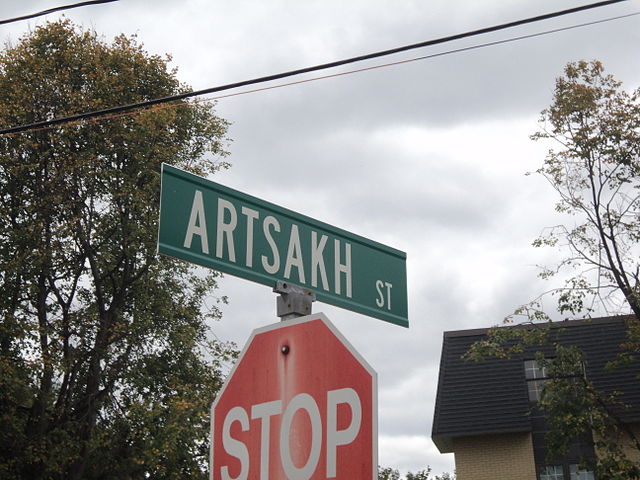First Nagorno-Karabakh War
The First Nagorno-Karabakh War was an ethnic and territorial conflict that took place from February 1988 to May 1994, in the enclave of Nagorno-Karabakh in southwestern Azerbaijan, between the majority ethnic Armenians of Nagorno-Karabakh backed by Armenia, and the Republic of Azerbaijan with support from Turkey. As the war progressed, Armenia and Azerbaijan, both former Soviet republics, entangled themselves in protracted, undeclared mountain warfare in the mountainous heights of Karabakh as Azerbaijan attempted to curb the secessionist movement in Nagorno-Karabakh.
Clockwise from top: Remnants of Azerbaijani APCs; internally displaced Azerbaijanis from the Armenian-occupied territories; Armenian T-72 tank memorial at the outskirts of Stepanakert; Armenian soldiers
Azerbaijani soldiers during the war, 1992
The road leading up to Shusha was the scene of a battle between Armenian and Azerbaijani armored vehicles.
A derelict BRDM-2 in Dashalty
Artsakh, officially the Republic of Artsakh or the Republic of Nagorno-Karabakh, was a breakaway state in the South Caucasus whose territory was internationally recognised as part of Azerbaijan. Between 1991 and 2023, Artsakh controlled parts of the former Nagorno-Karabakh Autonomous Oblast of the Azerbaijani Soviet Socialist Republic, including its capital Stepanakert. It had been an enclave within Azerbaijan from the 2020 Nagorno-Karabakh war until the 2023 Azerbaijani offensive, when the Azerbaijani military took control over the remaining territory controlled by Artsakh. Its only overland access route to Armenia after the 2020 war was via the 5 km (3.1 mi) wide Lachin corridor, which was placed under the supervision of Russian peacekeeping forces.
The town of Chartar in 2010
General view of the capital Stepanakert in 2015
Artsakh Street in Watertown, Massachusetts in 2011
Wall with images of fallen Armenian soldiers during the Second Nagorno-Karabakh War








